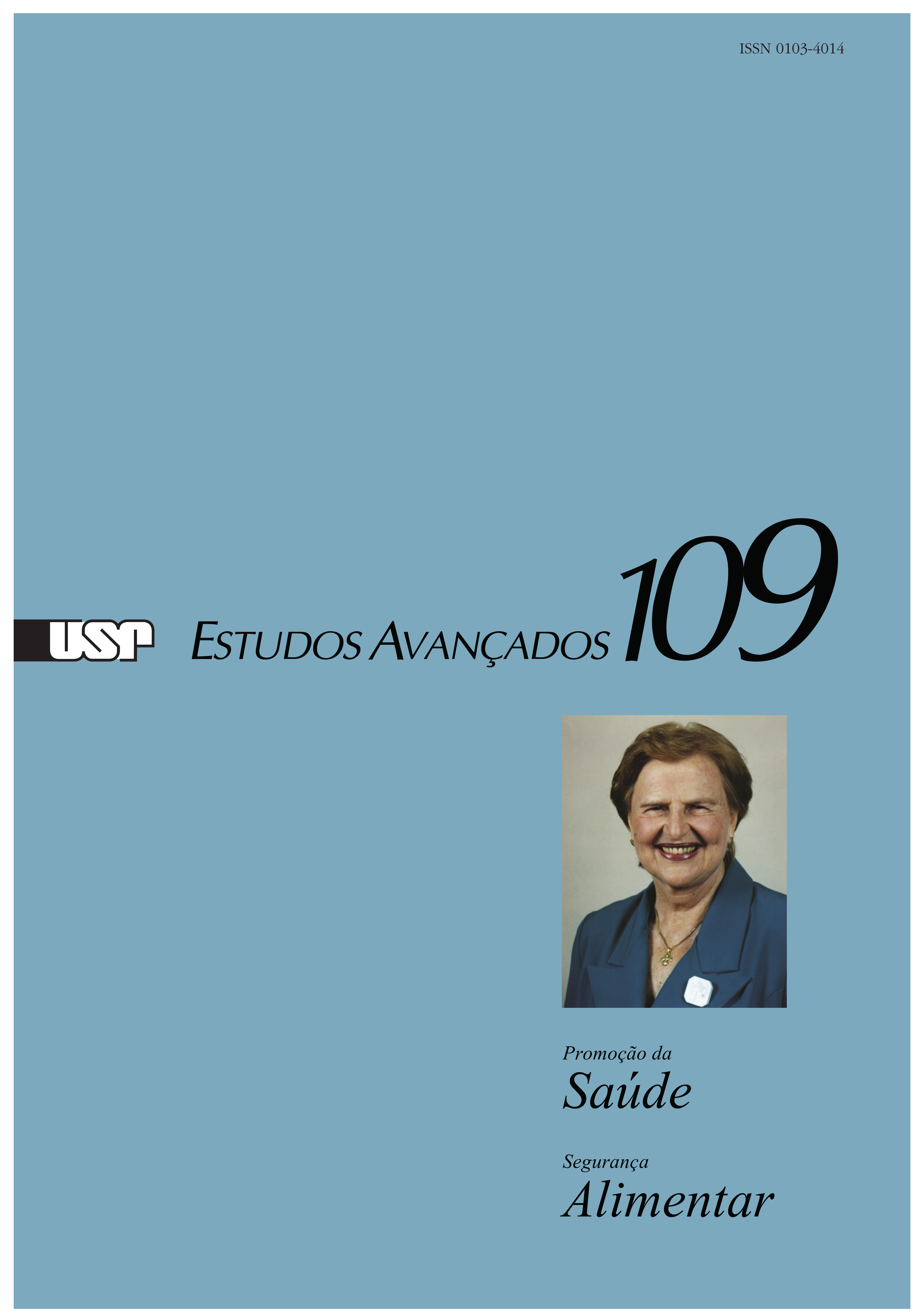Cardiovascular health and housing: An important dialogue held in precarious settlements in São Paulo
DOI:
https://doi.org/10.1590/s0103-4014.2023.37109.002Keywords:
Hospitalization, Mortality, Non-regular census tract, Precarious settlement, CartographyAbstract
The reduction of infectious diseases and longer life favored the greater prevalence of chronic diseases such as cancer, diabetes, cardiovascular and respiratory diseases. In general, the geographical scale of studies on socioeconomic conditions and health problems is the municipality. In this geographical scale there is no clear separation between the types of settlement. Intraurban studies by type of settlement can contribute to a more faithful portrait on inequalities in living conditions. In this study, data from residents of the municipality of São Paulo were analyzed who were admitted and those who died, by diseases of the circulatory system from 2010 to 2016 for deaths and from 2011 to 2016, for hospitalizations. Each hospitalization and death was attributed to the settlement of housing according to type: non-regular settlement, precarious or regular. The following calculations were made: proportion of hospital admissions by the Unified Health System (SUS) by groups of causes, standardized rates by gender and age group, hospitalization/inhabitant according to sex, age group and type of settlement and standardized rates by gender and age standardized mortality rates due to circulatory diseases. The results found an even more wicked situation in precarious settlements for all age groups, both sexes. The difference in cardiovascular health between the three types of settlements, evaluated through the proportions of hospital hospitalizations and mortality rates, show that almost 1,700,000 people in São Paulo are in a major disadvantage compared to the group formed by 85% of the population. In terms of hospitalizations, rates are higher in non-regular settlement. In this sense, it can be speculated that there is greater access to health service for residents of non-regular settlement in relation to those of precarious settlements. This access is reverted to lower mortality when the rates of both groups are compared. If we consider only two groups (regular and non-regular settlements), the situation of greater disadvantage in precarious settlements is diluted, becoming invisible. Such results can provide health surveillance to define specific programs for these settlements, as well as territory management, in general, to provide better housing conditions.
Downloads
References
BARROZO, L. V. et al. Changing spatial perception: dasymetric mapping to improve analysis of health outcomes in a megacity. Journal of Maps, v.5647, p.1-6, 22 out. 2015.
BARROZO, L. V. et al. GeoSES: A socioeconomic index for health and social research in Brazil. PLOS ONE, v.15, n.4, p.e0232074, 2020.
BARROZO, L. V.; MIRANDA, M. J. Geografia da mortalidade em São Paulo. In: SALDIVA, P. et al. (Ed.) Meio Ambiente e Saúde: o desafio das metrópoles. São Paulo: Ex-Libris Comunicação Integrada, 2010. p.172-85.
BATRA, N. et al. The Epidemiologist R Handbook. [s.l.: s.n.], 2021.
CARDOSO, A. L. Assentamentos precários no Brasil: discutindo conceitos. In: MORAIS, M. P.; KRAUSE, C.; LIMA NETO, V. C. (Ed.) Caracterização e tipologia de assentamentos precários: estudos de caso brasileiros. Brasília: Ipea, 2016. p.29-52.
COHEN, S. C. et al. Habitação saudável e ambientes favoráveis à saúde como estratégia de promoção da saúde. Ciência & Saúde Coletiva, v.12, n.1, p.191-8, 2007.
CORBURN, J. et al. Slum Health: Arresting Covid-19 and Improving Well-Being in Urban Informal Settlements. Journal of Urban Health, v.97, n.3, p.348-357, 1 jun. 2020.
EZEH, A. et al. The history, geography, and sociology of slums and the health problems of people who live in slums. The Lancet, v.389, n.10068, p.547-58, 4 fev. 2017.
FERREIRA, M. P.; MARQUES, E. C. L.; FUSARO, E. R. Assentamentos precários no Brasil: uma metodologia para estimação e análise. In: MORAIS, M. P.; KRAUSE, C.; NETO, V. C. L. (Ed.) Caracterização e tipologia de assentamentos precários: estudos de caso brasileiros. Brasília: Ipea, 2016. p.53-74.
HORTON, R. Offline: Covid-19 is not a pandemic. The Lancet, v.396, n.10255, p.874, set. 2020.
IBGE. Aglomerados subnormais 2019: classificação preliminar e informações de saúde para o enfrentamento à Covid-19 - Notas Técnicas. Rio de Janeiro: IBGE, 2020.
LILFORD, R. J. et al. Improving the health and welfare of people who live in slums. The Lancet, v.389, n.10068, p.559-70, 4 fev. 2017.
MARQUES, E. et al. Diagnóstico dos assentamentos precários nos municípios da Macrometrópole Paulista. São Paulo: [s.n.], 2013.
OPAS. Indicadores Básicos para a Saúde no Brasil: conceitos e aplicações. [s.l: s.n.], 2008.
PAIN, S. The rise of the Urbanite. Nature, v.531, n.S50, 2016.
PASTERNAK, S. Habitação e saúde. Estudos Avançados, v.30, n.86, p.51-66, abr. 2016.
PASTERNAK, S.; BOGUS, L. Favela em números. In: ALVIM, A. T. B.; RUBIO, V. M. (Ed.) Sustentabilidade em projetos de urbanização de assentamentos precários no Brasil: contextos, demandas e perspectivas. Barueri: Manole, 2022. p.71-98.
R CORE TEAM. A Language and Environment for Statistical Computing. Viena, 2019.
RITCHIE, H.; ROSER, M. Urbanization. Published online at OurWorldInData.org.: [s.l.: s.n.], 2018.
ROSS, A. G. P.; ZAMAN, K.; CLEMENS, J. D. Health Concerns in Urban Slums: A Glimpse of Things to Come? JAMA - Journal of the American Medical Association, v.321, n.20, p.1973-74, 28 maio 2019.
SINGER, M. et al. Syndemics and the biosocial conception of health. The Lancet, v.389, n.10072, p.941-50, mar. 2017.
THE WORLD BANK, D. R. G. Urban Development. Disponível em: <https://www.worldbank.org/en/topic/urbandevelopment/overview>. Acesso em: 13 ago. 2023.
UN-HABITAT. What is a city? [s.l: s.n.]. 2023. Disponível em: <https://unhabitat.org/sites/default/files/2020/06/city_definition_what_is_a_city.pdf>.
UN-HABITAT. Housing, slums and informal settlements. 2020. Disponível em: <https://data.unhabitat.org/pages/housing-slums-and-informal-settlements>. Acesso em: 13 ago. 2023.
Downloads
Published
Issue
Section
License
Copyright (c) 2023 Ligia Vizeu Barrozo, Carlos Leite, Edson Amaro Júnior, Paulo Hilário Nascimento Saldiva

This work is licensed under a Creative Commons Attribution-NonCommercial 4.0 International License.
Estudos Avançados não celebra contrato de cessão de direitos autorais com seus colaboradores, razão pela qual não detém os direitos autorais dos artigos publicados. Os interessados em reproduzir artigos publicados na revista devem necessariamente obter o consentimento do autor e atribuir devidamente os créditos ao periódico.


